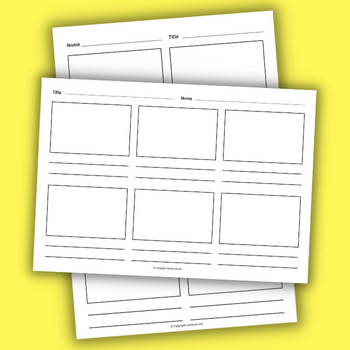PDFs featuring a variety of layouts
KS1, KS2
Years 1-6
These printable storyboard template PDF downloads include both portrait and landscape options. Each features a variety of layouts with different numbers of panels and space for students to write.
Portrait storyboard template options
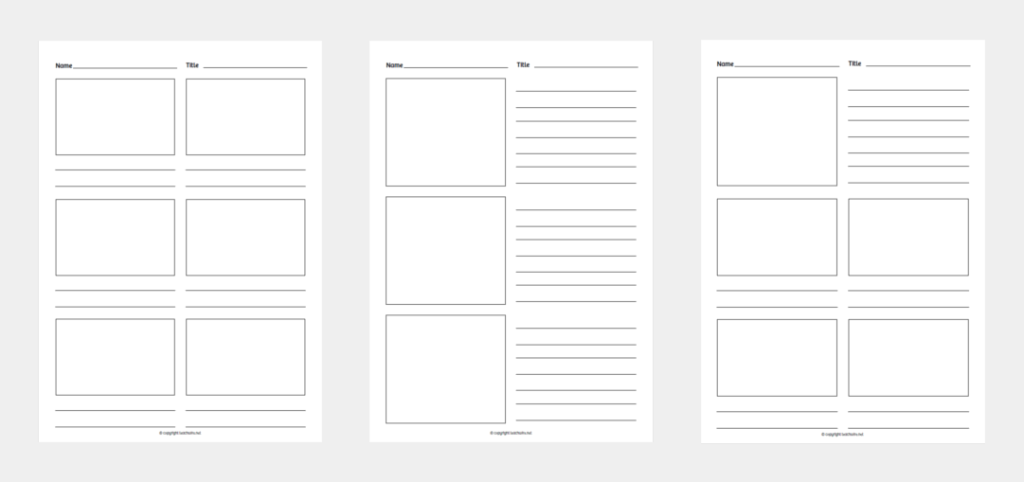
Landscape storyboard template options
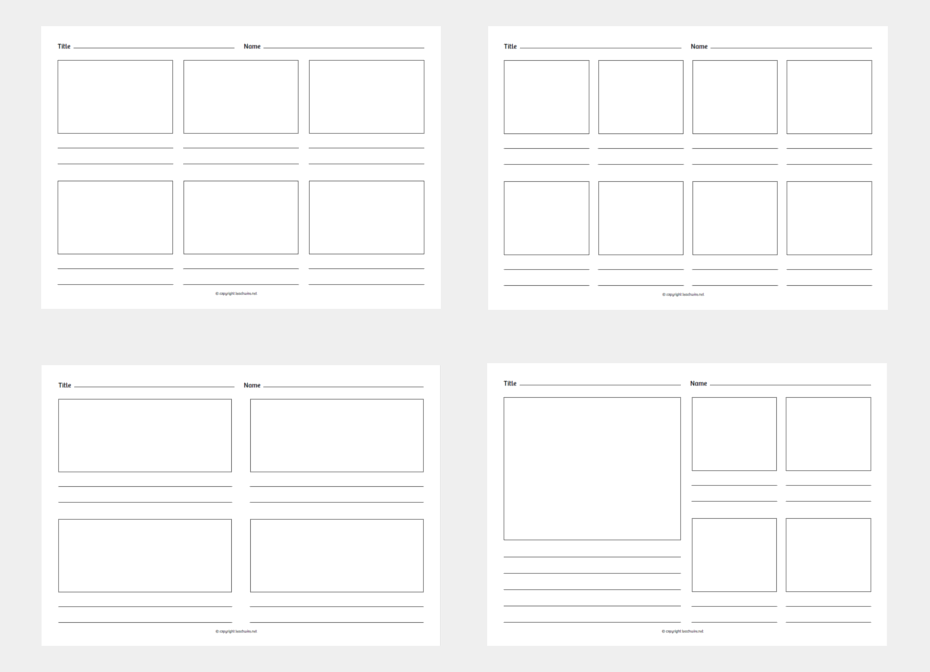
Browse more story writing resources.
Using storyboards for narrative writing at primary school
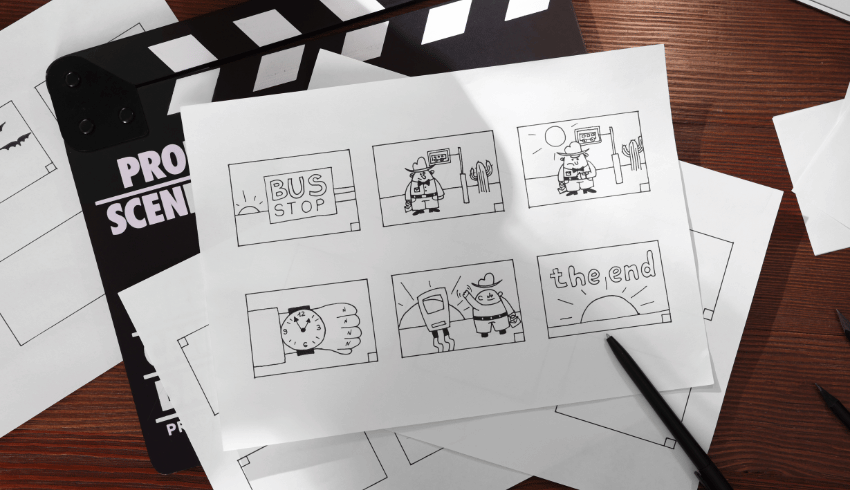
Former teacher Sue Drury explores how these excellent planning tools can help children with inspiration, sequencing and more…
Is your idea of storyboards based on scenes in films and TV shows? You know, the ones where smug, creative people use big, beautifully drawn cartoon drawings to outline their fabulous idea for an advertisement or movie.
Well, you’re only partly right. For a start, they don’t necessarily need visual representation at all.
In essence, a storyboard is a way of breaking up narrative writing into neat chunks. It helps you to crystallise a sequence of events.
“A storyboard is a way of breaking up narrative writing into neat chunks”
Each section does tend to have a picture, because a good image can convey a lot of information. Sometimes, however, a word or two works just as well.
Writing using pictures is, of course, nothing new. Ancient Egyptian hieroglyphs are an excellent early example of how images can advance a narrative clearly and concisely. In fact, many cultures have understood their value both for telling stories and conveying useful information.
In the classroom, a good storyboard template reduces the temptation for pupils to write full sentences instead of notes on their plan.
The blank canvas also gets them to think hard about the order in which the events in stories will occur. They can see at a glance whether the tale is coherent.
Examples of creative storyboards
We love these detailed storyboard examples from Year 6 pupils at Shoreditch Park Primary School. They explore the sequence of events leading up to VE Day.
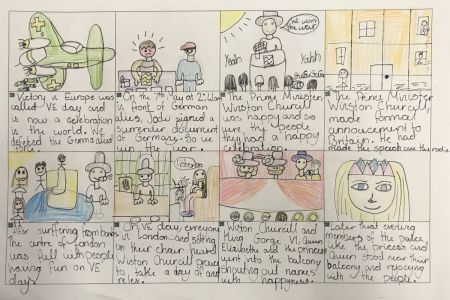
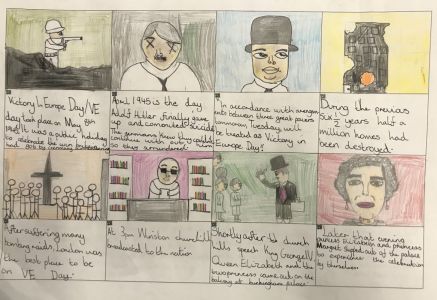
Storyboarding process as an event timeline
Storyboards work across a range of genres and creative projects.
One type of writing that is especially reliant on good sequencing is recounts. This is because they’re typically written in chronological order.
Using a storyboard approach to planning will help pupils to be confident that they have included all the key events and arranged them appropriately.
Those that are accomplished time-tellers can even include a small image of a clock or note of the time in each frame, not necessarily to mention in their writing, but as a reminder of when things happened.
Similarly, anyone who has put together flatpack furniture will know that many instruction leaflets are effectively storyboards these days.
Of course, we expect pupils to be able to write numbered instructions using imperative verbs, but these commercial examples do offer a telling insight into the power of images for helping us to follow a method.
Getting your pupils to plan their instructions using a blank storyboard template helps them see clearly that they have considered and covered every step of the process.
Basic storyboard template
One of the possible pitfalls of a frame-by-frame approach to composition is that it can lead to writing that feels disjointed. This makes it the perfect opportunity to remind children about the importance of cohesive devices.
Storyboards are also great for teaching about paragraphs, which should change when there is a shift in time or place of topic. This is similar to the way a film-maker might use a different camera angle to alter perspective.
Quite apart from all the benefits of using storyboards as a planning tool, they do also have their place in creating finished pieces using comic book-style frames.
“Effective storyboards are not about being great at drawing”
In fact, they can be particularly good for bringing a story to life or describing a process in subjects such as history or geography. Clear illustrations can complement crafted text very effectively here.
Finally, a little reminder to reassure those who are not confident about their artistic ability: effective storyboards are not about being great at drawing.
For most applications, simple line drawings, probably involving stick people with emoji-style faces, will be enough. The true craft comes in creating a cohesive story and well-ordered composition.
Free writing templates pack

Looking for more storyboard templates to download? Literacy resources website Plazoom offers a selection of writing templates that can be used to support pupils with planning stories and other written work in KS1 and KS2, including mind maps, story maps and storyboards.
